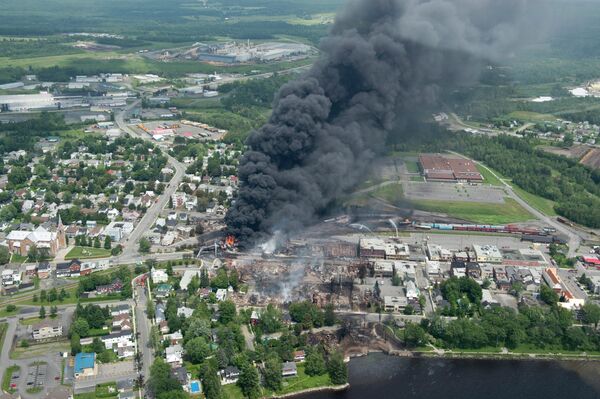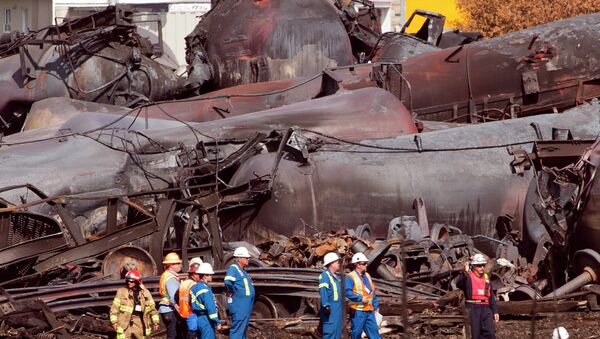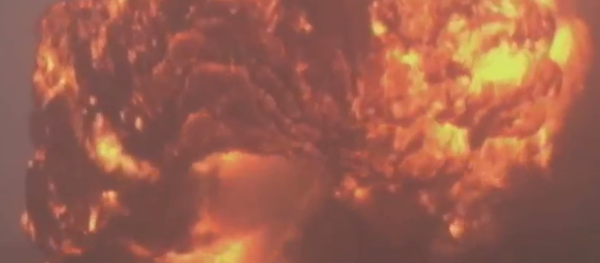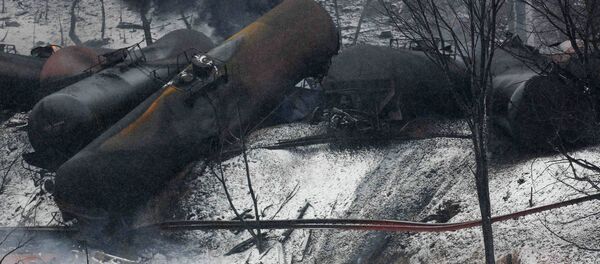The absence of pipeline infrastructure means that about 70 percent of the 1 million barrels of oil produced every day is transported via rail. Many of the trains are carrying crude from the Bakken oil fields in North Dakota to refineries around Philadelphia and the east coast.
In Pennsylvania, more than 3.9 million of the state’s 12.8 million residents live within the federally recommended half-mile evacuation zone of rail routes, according to a report by PennEnvironment and FracTracker.
“Unbeknownst to residents, community leaders and first responders, these trains are rumbling through our neighborhoods, putting thousands of Pennsylvanians at risk for death, injury and destruction,” said Stephen Riccardi of PennEnvironment.
Last month in West Virginia, a 109-car train derailed and exploded, resulting in a massive fireball that burned for days and forced the evacuation of two towns. A similar 2013 derailment in Lac-Megantic, Quebec, left 47 dead.
"Considering the burgeoning volume of oil train traffic and the rate of accidents, this is a very serious issue warranting heightened transparency, communications, and safety enhancements," said Brook Lenker, FracTracker's executive director.
PublicSource, a nonprofit news agency, released its own report Monday. Their analysis, based on data provided by railroads to federal regulators, found that 1.5 million state residents are at risk.
That includes 327 K-12 schools, 37 hospitals and 61 nursing homes, reported western Pennsylvania newspaper Times Online.

Doug Roysdon lives about 1,600 feet from a rail line in Bethlehem, in the eastern part of the state.
"A week ago I was unaware as anybody else that these bomb-like trains are going within bombing distance of my house," Roydson was quoted as saying by the Express-Times.
Last week, Pennsylvania Governor Tom Wolf called on President Barack Obama to encourage more study and improved safety standards.
"We cannot afford to wait for a major incident before taking action," Wolf wrote.
Democratic Senator Bob Casey also wrote to the president last week, asking his administration to hasten railway safety improvements.
Brian Straessle, a spokesman for the American Petroleum Institute, told PennLive: "Even one incident is too many, so we are working with regulators and the railroads to enhance safety through a comprehensive approach to accident prevention, mitigation and response."
In 2009, the US National Transportation Safety Board designated the DOT-111, a type of tanker, as inadequate to carry ethanol and crude oil, mainly because of its inability to prevent a puncture in the event of a crash.
That led railway companies to create the CPC-1232, which is a reinforced version of the DOT-111. CPC-1232s were involved in the fiery derailment in West Virginia last month, proving that the reinforcements were not adequate.
Both tankers have 7/16-inch-thick shells, which fall short of the 9/16-inch mark that US regulators say would decrease the likelihood of puncturing during a crash.




